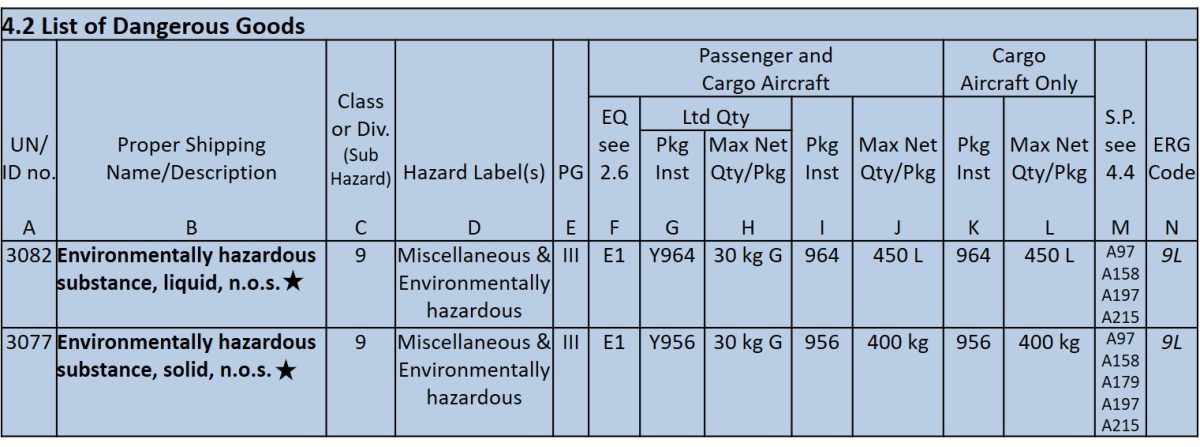What is in the DGL List?
The Dangerous Goods List (DGL) in the International Maritime Dangerous Goods (IMDG) Code typically consists of several columns to provide detailed information about each listed dangerous good, substance, or article. The number of columns may vary slightly based on the specific edition of the IMDG Code, but here are the common columns found in the DGL:
Column 1 – UN Number:
This column contains the United Nations (UN) number assigned to each dangerous good. The UN number is a unique identifier used internationally to categorize and track hazardous materials.
Column 2 – Proper Shipping Name (PSN):
This column specifies the Proper Shipping Name (PSN) of the dangerous good. The PSN is the standardized name used to identify the substance or article being shipped.
Column 3 – Class or Division:
This column indicates the hazard class or division to which the dangerous good belongs. Hazard classes categorize materials based on their primary hazards, such as explosives, gases, flammable liquids, and so on.
Column 4 – Subsidiary Risk:
If applicable, this column provides information about any subsidiary risks associated with the dangerous good. Subsidiary risks indicate additional hazards that may be present.
Column 5 – Packing Group:
This column specifies the packing group to which the dangerous good is assigned. Packing groups (I, II, or III) are used to classify materials based on their degree of danger.
Column 6 – Special Provisions:
This column contains references to special provisions within the IMDG Code that may apply to the specific dangerous good. Special provisions provide additional requirements, exceptions, or restrictions.
Column 7 – Limited Quantities (if applicable):
If the dangerous good is eligible for limited quantities, this column provides information about the applicable quantity limits and packaging requirements.
Column 8 – Packaging Instructions:
This column references the specific packaging instructions within the IMDG Code that apply to the dangerous good. It provides guidance on how the material should be packaged for safe transport.
Column 9 – Packing Authorizations (if applicable):
If specific packing authorizations are required for the dangerous good, this column provides references to the relevant authorizations in the code.
Column 10 – Special Packing Provisions (if applicable):
This column may contain references to special packing provisions that apply to the material. These provisions provide additional packaging requirements or considerations.
Column 11 – Quantity Limitations (if applicable):
This column indicates any quantity limitations or restrictions that apply to the dangerous good when shipped.
Column 12 – Vessel Stowage (if applicable):
If there are specific stowage requirements for the dangerous good on vessels, this column provides references to the relevant stowage provisions in the IMDG Code.
These columns collectively provide comprehensive information about each listed dangerous good, helping shippers, carriers, and regulatory authorities understand its classification, handling, packaging, and documentation requirements. The exact format and content of the DGL may be subject to updates in different editions of the IMDG Code, so it’s essential to consult the most current version for precise information.

